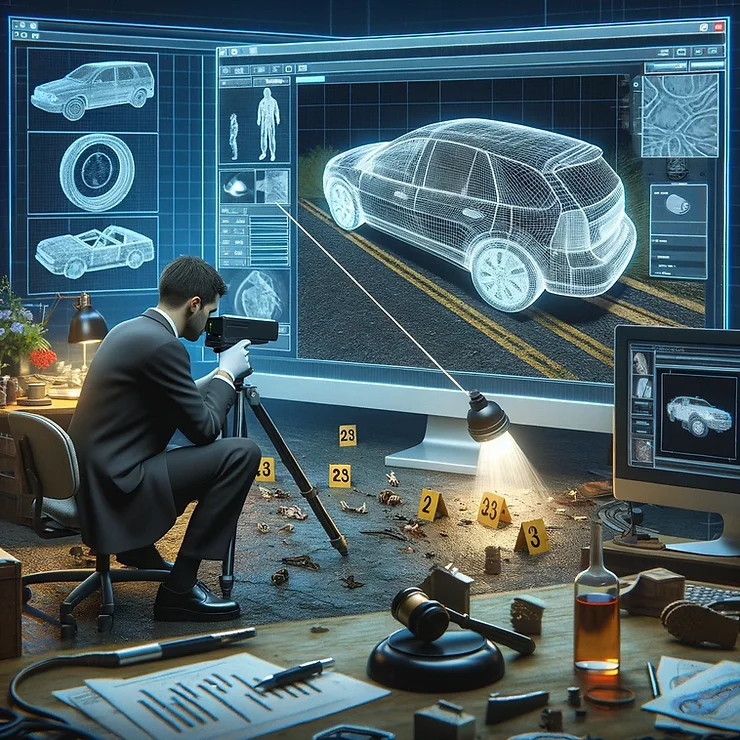
The meticulous world of forensic science and law enforcement has found a formidable ally in 3D scanning technology. With the ability to capture scenes and objects in minute detail, 3D scanning is reshaping investigative techniques, opening up new avenues for analysis and presentation in legal contexts. This blog post explores the transformative impact of 3D scanning in forensic applications and its increasing indispensability in the pursuit of justice.
Capturing Crime Scenes in Detail
The traditional approach to crime scene investigation involves taking multiple photographs and manual measurements, a process that is both time-consuming and prone to human error. 3D scanning streamlines this procedure by quickly capturing a complete and precise digital representation of the scene. This detailed capture not only saves valuable investigative time but also ensures that every aspect of the scene is recorded for future examination.
Enhancing Evidence Analysis
Evidence can be fleeting and fragile, and its integrity is paramount in forensic science. 3D scanning allows for non-intrusive analysis of evidence, preserving the original state while still providing investigators with the rich data needed for thorough examination. Be it analyzing the trajectory of a bullet or the pattern of a tire tread, 3D scans deliver critical insights without altering the evidence.
Reinventing Witness Testimony and Jury Presentations
Presenting evidence in a courtroom in a manner that is both comprehensible and compelling can be challenging. 3D scanning offers a solution by transforming complex scenes into easy-to-understand 3D visualizations. Jurors can virtually walk through a crime scene or view a 3D model of a piece of evidence, leading to better-informed decisions based on a more interactive and immersive examination of the facts.
Facilitating Accident Reconstruction
Accidents, especially on the roads, can be chaotic events with many contributing factors. 3D scanning helps in reconstructing these incidents to determine causality and liability. By creating precise models of the accident scene, including vehicle positioning, debris, and skid marks, analysts can simulate scenarios and understand the dynamics at play, which is crucial in both criminal and civil litigation.
Training and Education in Forensic Sciences
The fidelity of 3D s
canning is also transforming education and training within law enforcement. Trainees can interact with a variety of crime scenes in a virtual environment, providing them with a breadth of experience that would be impossible to obtain in the real world. This advanced training ensures that when officers and technicians encounter the complexities of a real crime scene, they are better prepared and equipped with the necessary skills.
KM3DSCAN: Advancing Forensic Excellence
KM3DSCAN contributes to the evolution of forensic science by offering precise and reliable 3D scanning services. Our state-of-the-art technology captures every detail, providing law enforcement agencies with the tools for in-depth analysis and effective courtroom presentations.
At KM3DSCAN, we are committed to upholding the highest standards of forensic investigation. By working with forensic experts, we ensure our scans meet the meticulous requirements of the field, facilitating a new level of investigative accuracy and efficiency. Partner with KM3DSCAN to bring the unseen dimensions to light and advance the cause of justice with clarity and precision.